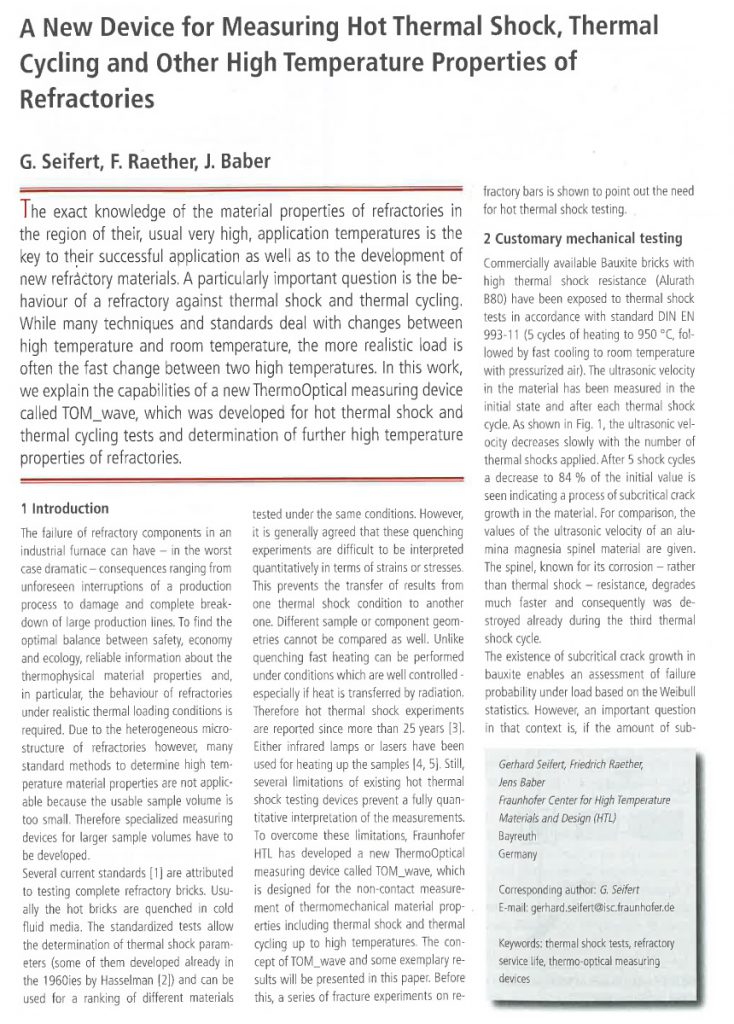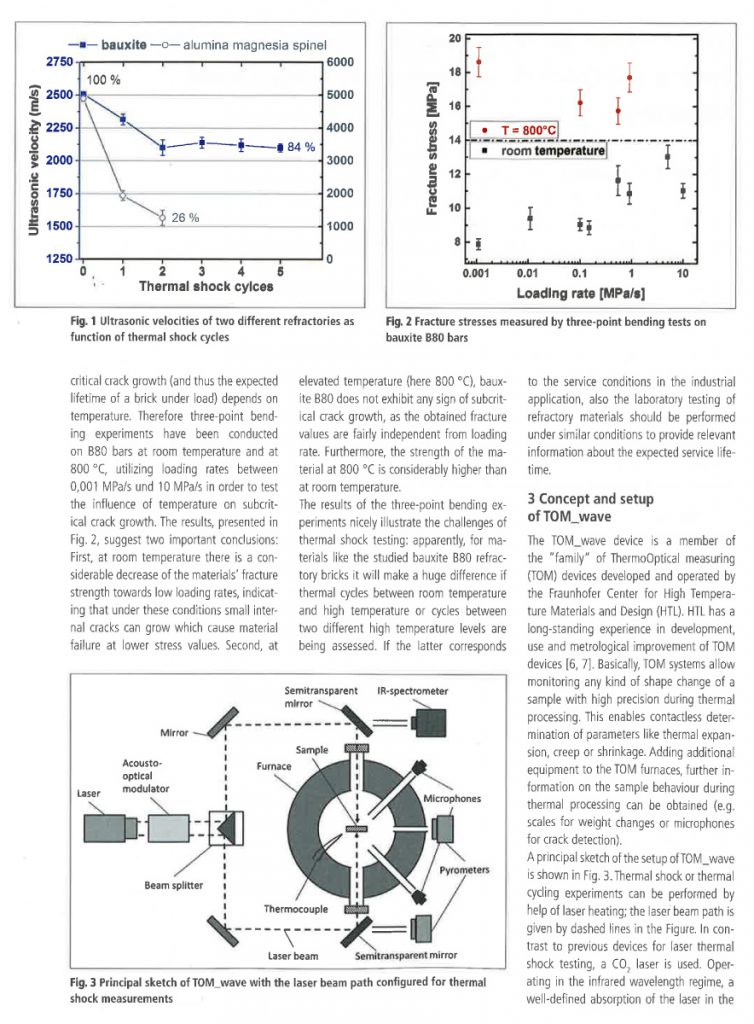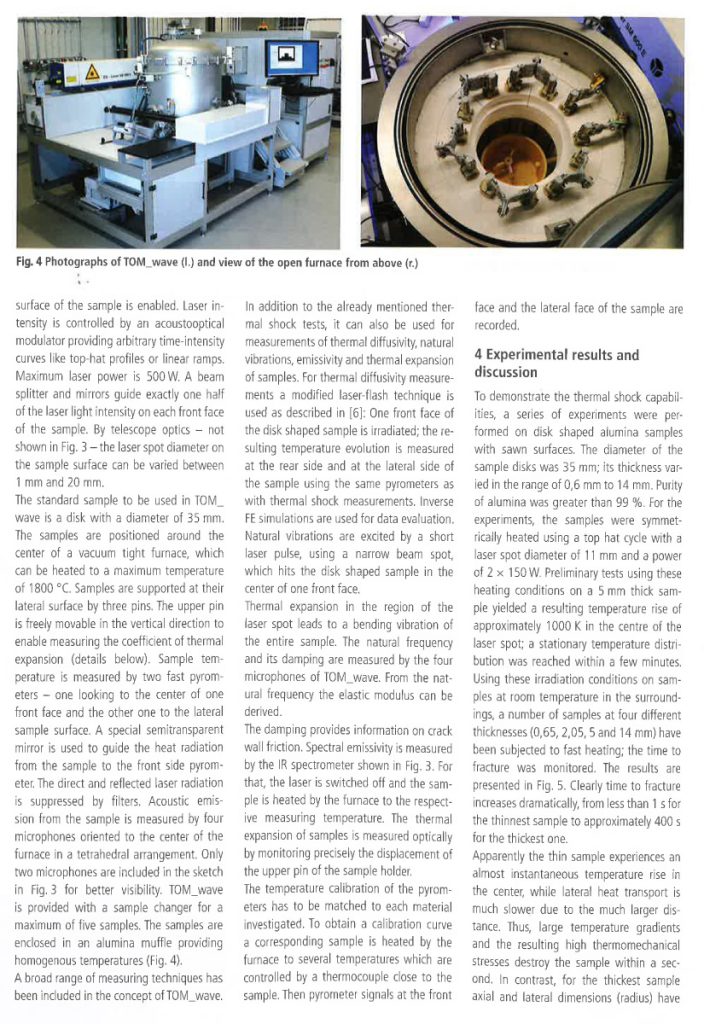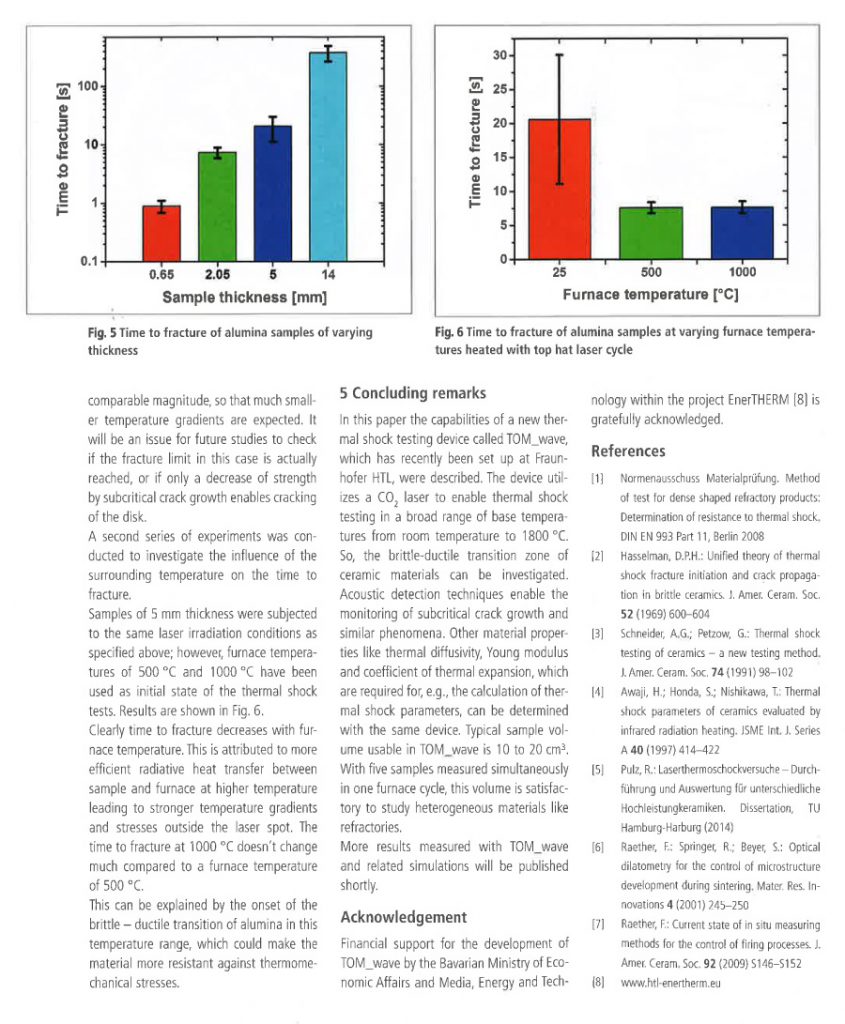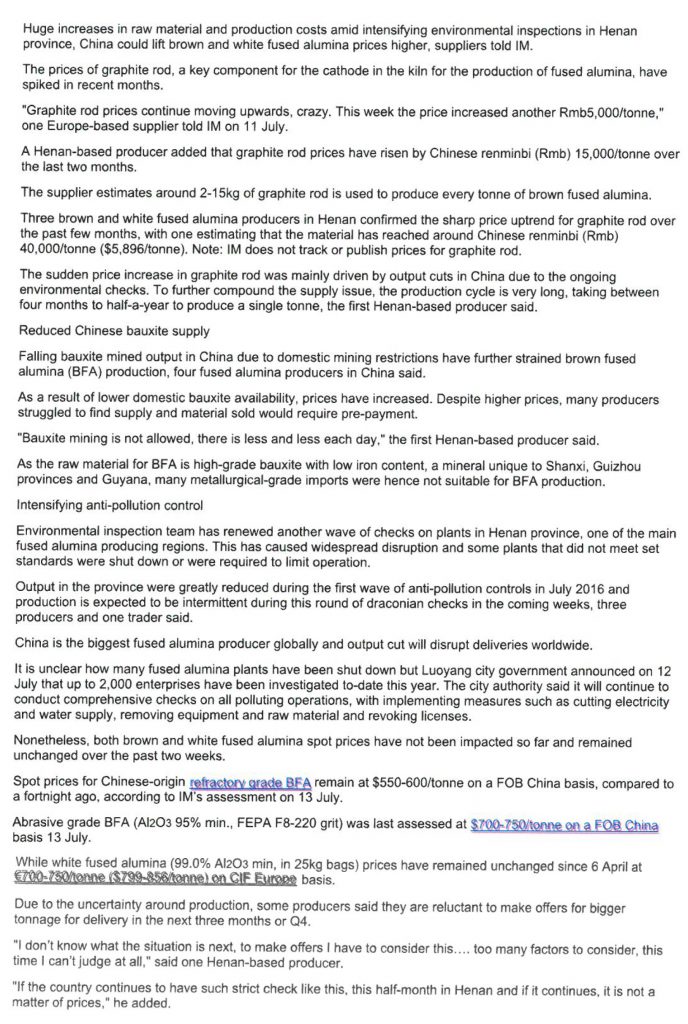The latest surge in prices follows extreme tightness in availability of material from European producers, and compounds the shortage seen in China.
Prices of European fused magnesia (FM) have surged to exceed the $1,000/tonne mark this week, following repeated upticks in Chinese prices and extremely tight availability of material reflecting on international demand flows.
While the European magnesia market as a whole somehow managed to stave off the rapid price uptrend that has been seen in China since Q2, the widespread shortage of fused magnesia has now taken the price of the commodity up by over 50% against earlier levels.
European-produced fused magnesia is trading between $1,000/tonne and $1,200/tonne FOB Europe, according to an IM assessment on 29 August.
This marks a 58% surge in prices compared with a previous level of $640-750/tonne FOB Europe.
The latest increase follows a first uptick in the price of the commodity in June, from $480-650/tonne to $640-750/tonne.
A shortage of FM volumes available for spot selling has been the leading driver of the price surge.
«We are totally sold out on all of our FM grades,» a large European producer told IM, adding that he has not had any material available «for months».
Another seller added: «We can offer only small trial size lots.»
A third producer also said he does not have anything available outside existing contracts. He added: «Buyers are
desperate to secure their supplies and are ready to accept any price.»
Part of the current issue in availability is the fact that a large share of European production is normally booked by domestic customers who settle yearly contracts. This crucially reduces the volumes left for spot business at times of tight supply.
The situation in China has made matters worse.
Disruptions in production at Chinese facilities – where operations were shut during environmental inspections in previous months, and are very slowly restarting – continue to affect local operations.
Additionally, restrictions on the use of dynamite in mining in some areas of the country led to shortage of high-quality magnesite ore that is used for producing FM. This made production impossible also for those few factories that were able to keep operating during and after the inspections.
The market tightness became apparent as customers found it really hard to source FM volumes from China. In late July, Chinese fused magnesia prices rose by around $200/tonne in one go, exceeding the 2016 levels when export quotas and duties were in place.
At that time, a few European suppliers had already told IM that they were «fully booked».
One noted in late July: «Usually we see a slowdown in demand at this time of year, after strong buying in Q1. Now we are receiving enquiries constantly: we are running at full capacity and cannot meet all the request. This is all down to China being short.»
Stockpiles of material available in Europe – not only FM, but also dead burned magnesia (DBM) and caustic calcined magnesia (CCM) – made sourcing possible for Europe-based consumers in the early months of the year. This kept prices in Europe more stable against rapid price growth in China.
Availability has now become tight for some DBM grades, while CCM remains in better shape overall.
FM is by far the shortest material in Europe now.
Other European magnesia prices have remained unchanged. Calcined agricultural magnesia stands at €240-300/tonne CIF EU ports. Electrical-grade fused magnesia is priced at $1,500-2,450/tonne ex-works UK. Raw magnesite, max 3.5% SiO2 content, is also stable at €65-80/tonne FOB East Mediterranean.
In North America, electrical-grade fused magnesia is trading at $1,700-2,500/tonne ex-works US, while refractory-grade fused magnesia stands at $900-1,400/tonne FOB US.
